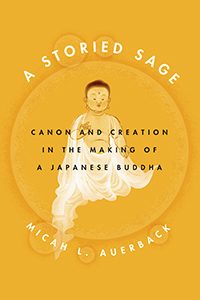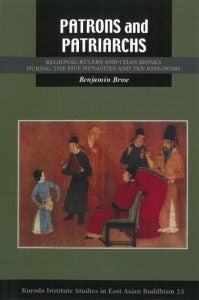 Buddhas and Ancestors: Religion and Wealth in Fourteenth-Century Korea
Buddhas and Ancestors: Religion and Wealth in Fourteenth-Century Korea
Juhn Y. Ahn
Two issues central to the transition from the Koryo to the Choson dynasty in fourteenth-century Korea were social differences in ruling elites and the decline of Buddhism, which had been the state religion. In this revisionist history, Juhn Ahn challenges the long-accepted Confucian critique that Buddhism had become so powerful and corrupt that the state had to suppress it. When newly rising elites (many with strong ties to the Mongols) used lavish donations to Buddhist institutions to enhance their status, older elites defended their own adherence to this time-honored system by arguing that their donations were linked to virtue. This emphasis on virtue and the consequent separation of religion from wealth facilitated the Confucianization of Korea and the relegation of Buddhism to the margins of public authority during the Choson dynasty. Read more
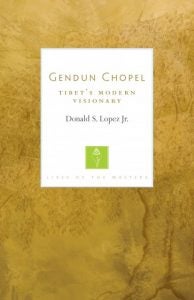 Gendun Chopel: Tibet’s Modern Visionary
Gendun Chopel: Tibet’s Modern Visionary
Donald S. Lopez, Jr.
Visionary, artist, poet, iconoclast, philosopher, adventurer, master of the arts of love, tantric yogin, Buddhist saint. These are some of the terms that describe Tibet’s modern culture hero Gendun Chopel (1903–1951). The life and writings of this sage of the Himalayas mark a key turning point in Tibetan history, when twentieth-century modernity came crashing into Tibet from British India to the south and from Communist China to the east. For the first time, the astonishing breadth of his remarkable accomplishments is captured in a single, definitive volume. Read more
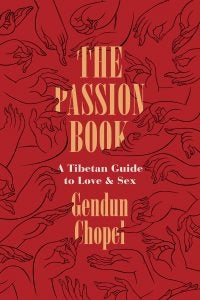 The Passion Book: A Tibetan Guide to Love and Sex
The Passion Book: A Tibetan Guide to Love and Sex
Donald S. Lopez, Jr. and Thupten Jinpa
The Passion Book is the most famous work of erotica in the vast literature of Tibetan Buddhism, written by the legendary scholar and poet Gendun Chopel (1903-1951). Soon after arriving in India in 1934, he discovered the Kama Sutra. Realizing that this genre of the erotic was unknown in Tibet, he set out to correct the situation. His sources were two: classical Sanskrit works and his own experiences with his lovers. Completed in 1939, his “treatise on passion” circulated in manuscript form in Tibet, scandalizing and arousing its readers. Read more
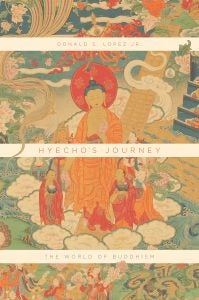 Hyecho’s Journey: The World of Buddhism
Hyecho’s Journey: The World of Buddhism
Donald S. Lopez, Jr.
In the year 721, a young Buddhist monk named Hyecho set out from the kingdom of Silla, on the Korean peninsula, on what would become one of the most extraordinary journeys in history. Sailing first to China, Hyecho continued to what is today Vietnam, Indonesia, Myanmar, India, Pakistan, Afghanistan, and Iran, before taking the Silk Road and heading back east, where he ended his days on the sacred mountain of Wutaishan in China. Read more
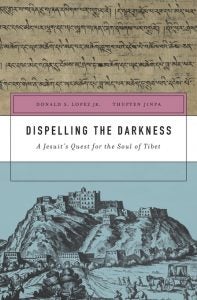 Dispelling the Darkness: A Jesuit’s Quest for the Soul of Tibet
Dispelling the Darkness: A Jesuit’s Quest for the Soul of Tibet
Donald S. Lopez, Jr. and Thupten Jinpa
In a remote Himalayan village in 1721, the Jesuit priest Ippolito Desideri awaited permission from Rome to continue his mission to convert the Tibetan people to Christianity. In the meantime, he forged ahead with an ambitious project: a treatise, written in classical Tibetan, that would refute key Buddhist doctrines. If he could convince the Buddhist monks that these doctrines were false, thought Desideri, he would dispel the darkness of idolatry from Tibet. Read more
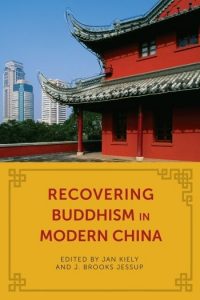 “Resurrecting Xuanzang: The Modern Travels of a Medieval Monk.” Benjamin Brose.
“Resurrecting Xuanzang: The Modern Travels of a Medieval Monk.” Benjamin Brose.
In Recovering Buddhism in Modern China, ed. Jan Kiely and J. Brooks Jessup
Benjamin Brose’s chapter explores how the treatment, division and dispersement of a relic of the famous traveling Tang dynasty Buddhist monk Xuanzang discovered near Nanjing during the Japanese occupation reveals multiple, often constested, and yet persistent efforts to marshal the value of Buddhist religious practices for various state and Buddhist community cultural politics of the mid-century.
A Storied Sage: Canon and Creation in the Making of a Japanese Buddha
Micah L. Auerback
Since its arrival in Japan in the sixth century, Buddhism has played a central role in Japanese culture. But the historical figure of the Buddha, the prince of ancient Indian descent who abandoned his wealth and power to become an awakened being, has repeatedly disappeared and reappeared, emerging each time in a different form and to different ends. A Storied Sage traces this transformation of concepts of the Buddha, from Japan’s ancient period in the eighth century to the end of the Meiji period in the early twentieth century. Read more
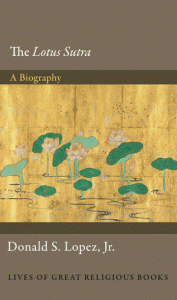 The Lotus Sūtra: A Biography
The Lotus Sūtra: A Biography
Donald S. Lopez, Jr.
The Lotus Sutra is arguably the most famous of all Buddhist scriptures. Composed in India in the first centuries of the Common Era, it is renowned for its inspiring message that all beings are destined for supreme enlightenment. Here, Donald Lopez provides an engaging and accessible biography of this enduring classic. Read more
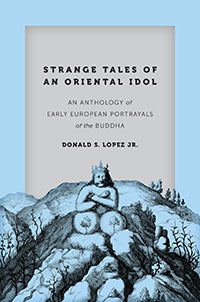 Strange Tales of an Oriental Idol: An Anthology of Early European Portrayals of the Buddha Donald S. Lopez, Jr., Ed.
Strange Tales of an Oriental Idol: An Anthology of Early European Portrayals of the Buddha Donald S. Lopez, Jr., Ed.
We tend to think that the Buddha has always been seen as the compassionate sage admired around the world today, but until the nineteenth century, Europeans often regarded him as a nefarious figure, an idol worshipped by the pagans of the Orient. Donald S. Lopez Jr. offers here a rich sourcebook of European fantasies about the Buddha drawn from the works of dozens of authors over fifteen hundred years, including Clement of Alexandria, Marco Polo, St. Francis Xavier, Voltaire, and Sir William Jones. Read more
Patrons and Patriarchs: Regional Rulers and Chan Monks during the Five Dynasties and Ten Kingdoms
Benjamin Brose
Patrons and Patriarchs breaks new ground in the study of clergy-court relations during the tumultuous period that spanned the collapse of the Tang dynasty (618–907) and the consolidation of the Northern Song (960–1127). This era, known as the Five Dynasties and Ten Kingdoms, has typically been characterized as a time of debilitating violence and instability, but it also brought increased economic prosperity, regional development, and political autonomy to southern territories. Read more
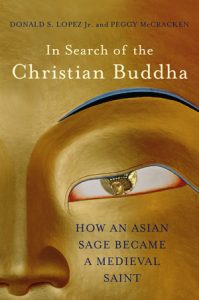 In Search of the Christian Buddha: How an Asian Sage Became a Medieval Saint
In Search of the Christian Buddha: How an Asian Sage Became a Medieval Saint
Donald S. Lopez, Jr. and Peggy McCracken
The fascinating account of how the story of the Buddha was transformed into the legend of a Christian saint.
The story of Saint Josaphat, a prince who gave up his wealth and kingdom to follow Jesus, was one of the most popular Christian tales of the Middle Ages, translated into a dozen languages, and cited by Shakespeare in The Merchant of Venice. Yet Josaphat is only remembered today because of the similarities of his life to that of the Buddha. Read more
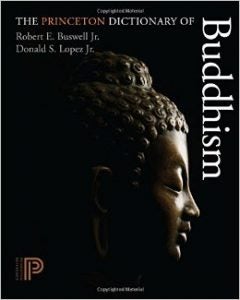 The Princeton Dictionary of Buddhism
The Princeton Dictionary of Buddhism
Robert E. Buswell, Jr. and Donald S. Lopez, Jr.
With more than 5,000 entries totaling over a million words, this is the most comprehensive and authoritative dictionary of Buddhism ever produced in English. It is also the first to cover terms from all of the canonical Buddhist languages and traditions: Sanskrit, Pali, Tibetan, Chinese, Japanese, and Korean. Unlike reference works that focus on a single Buddhist language or school, The Princeton Dictionary of Buddhism bridges the major Buddhist traditions to provide encyclopedic coverage of the most important terms, concepts, texts, authors, deities, schools, monasteries, and geographical sites from across the history of Buddhism. The main entries offer both a brief definition and a substantial short essay on the broader meaning and significance of the term covered. Extensive cross-references allow readers to find related terms and concepts. An appendix of Buddhist lists (for example, the four noble truths and the thirty-two marks of the Buddha), a timeline, six maps, and two diagrams are also included. Read more
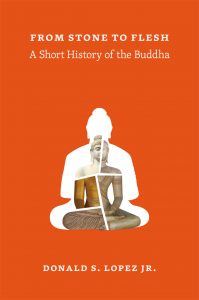 From Stone to Flesh: A Short History of the Buddha
From Stone to Flesh: A Short History of the Buddha
Donald S. Lopez, Jr.
We have come to admire Buddhism for being profound but accessible, as much a lifestyle as a religion. The credit for creating Buddhism goes to the Buddha, a figure widely respected across the Western world for his philosophical insight, his teachings of nonviolence, and his practice of meditation. But who was this Buddha, and how did he become the Buddha we know and love today? Read more
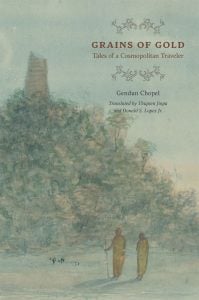 Grains of Gold: Tales of a Cosmopolitan Traveler
Grains of Gold: Tales of a Cosmopolitan Traveler
Donald S. Lopez, Jr.
In 1941, philosopher and poet Gendun Chopel (1903–51) sent a large manuscript by ship, train, and yak across mountains and deserts to his homeland in the northeastern corner of Tibet. He would follow it five years later, returning to his native land after twelve years in India and Sri Lanka. But he did not receive the welcome he imagined: he was arrested by the government of the regent of the young Dalai Lama on trumped-up charges of treason. He emerged from prison three years later a broken man and died soon after. Read more
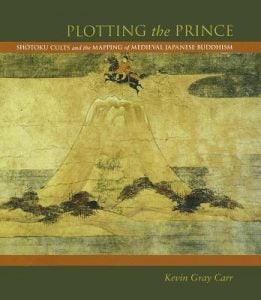 Plotting the Prince: Shotoku Cults and the Mapping of Medieval Japanese Buddhism
Plotting the Prince: Shotoku Cults and the Mapping of Medieval Japanese Buddhism
Kevin Carr
Plotting the Prince traces the development of conceptual maps of the world created through the telling of stories about Prince Shōtoku (573?–622?), an eminent statesman who is credited with founding Buddhism in Japan. It analyzes his place in the sacred landscape and the material relics of the cult of personality dedicated to him, focusing on the art created from the tenth to fourteenth centuries. The book asks not only who Shōtoku was, but also how images of his life served the needs of devotees in early medieval Japan. Read more


